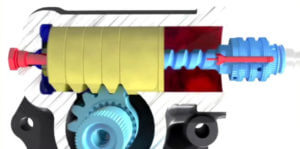Rack and pinon steering
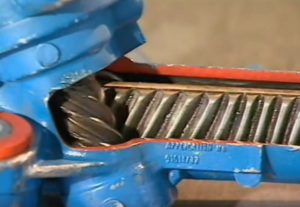
What is rack and pinion steering and how is it different from traditional steering systems?
A car rack and pinion steering mechanism use a pinion gear that mates with teeth machined into a steel rod (called the rack). When you turn the steering wheel, 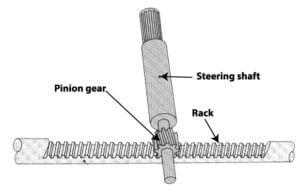 the pinion gear rotates against the rack to move it in linear left and right movements. Each end of the rack is connected to the wheels with a tie rod and tie rod ends.
the pinion gear rotates against the rack to move it in linear left and right movements. Each end of the rack is connected to the wheels with a tie rod and tie rod ends.
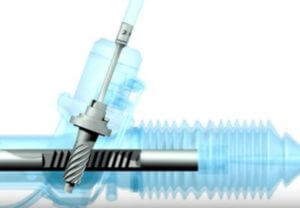
Traditional pitman arm or recirculating ball steering gears use a worm gear and “nut” steering gear mechanism and parallelogram style steering linkage. In this system, turning the steering wheel rotates the worm gear, moving the nut moves up and down, which then rotates the pitman arm in an arc. The pitman arm connects to a center linking rod, idler arm, and two tie rods connected to the wheels. The pitman arm translates an arc motion into linear left and right movement. There are many more moving parts in a recirculating ball steering mechanism and far more components and movable joints in the steering linkage in parallelogram steering system. Here’s a deeper explanation of each system.
Recirculating ball steering gear and parallelogram steering linkage
This image shows the inside of a recirculating ball steering gear. Manufacturers design the grooves on the worm gear to accept ball bearings and include a recirculating tube as a return path for the balls. Rotating ball bearings against the threads of the worm gear result in far less friction than the same setup without the ball bearings. The main advantage of a recirculating ball style steering gear is the increased mechanical advantage. It takes less mechanical effort to steer with a recirculating ball steering gear than a rack and pinion system.
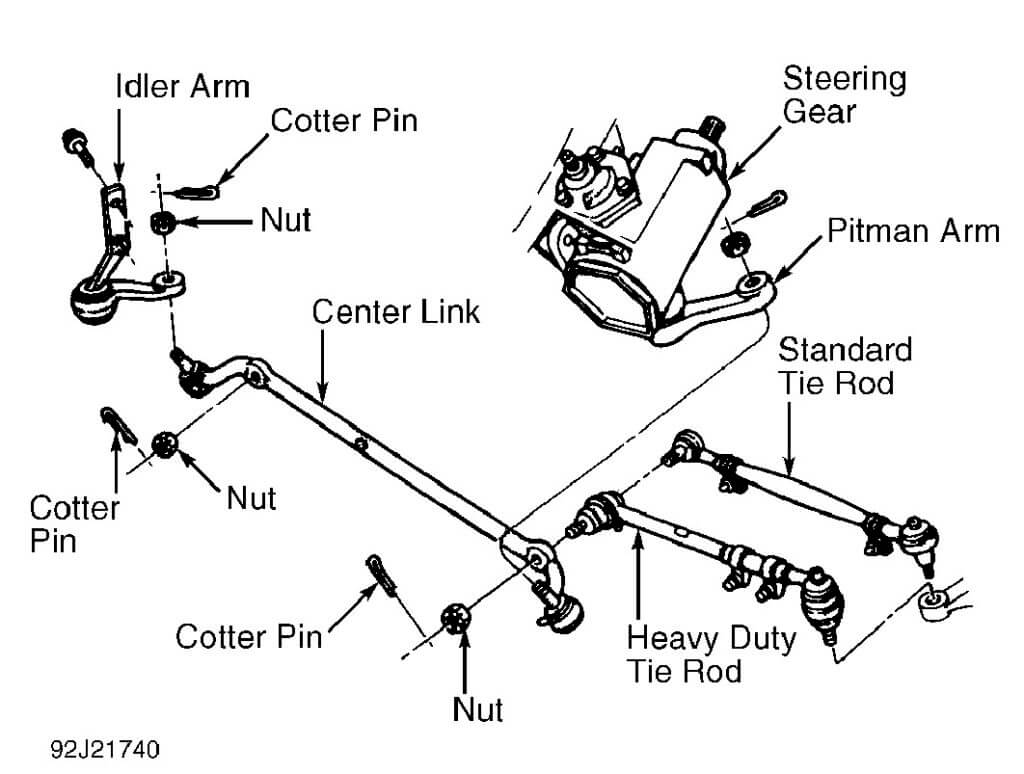
On the downside, recirculating ball steering gears weigh more than a rack and pinion steering system, cost more to manufacture and install and repair. Plus, the additional movable joints in a parallelogram steering system reduce road feel and delay driver input slightly.
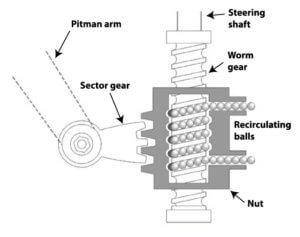
Rack and pinion steering systems
As you can see in the diagrams, rack and pinion steering systems have fewer moving parts inside the gear compared to recirculating ball steering systems. Plus, they have fewer joints in the steering linkage. Steering motion is transferred directly to the rack and then to the wheels, so the steering is more precise and far more responsive. The direct linkage to the wheels provides more road feel and driver feedback, so driver response time is decreased when encountering slippery patches. The system costs less to manufacture and install and weighs less, which improves gas mileage.
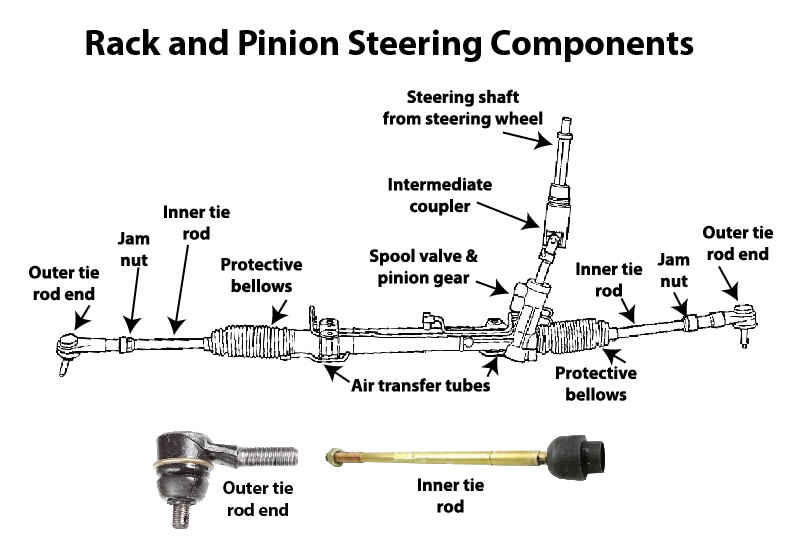
Where the inner tie rod and outer tie rod ends are located on a rack and pinion steering gear
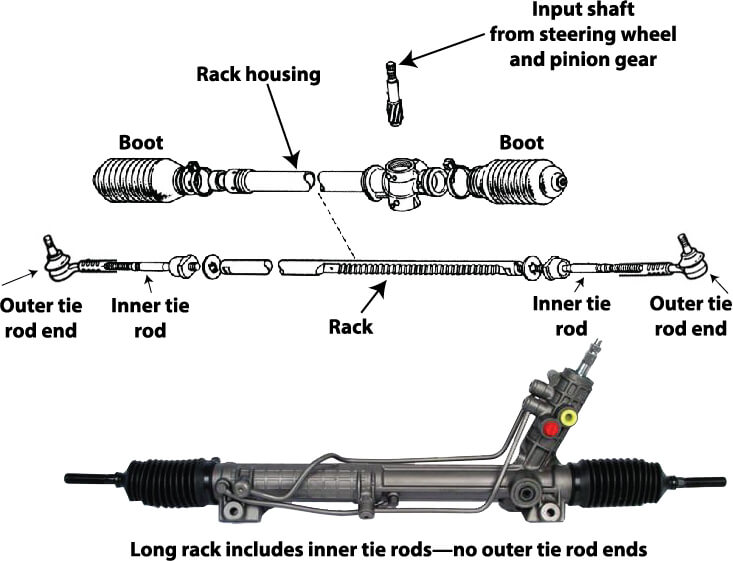
However, rack and pinion steering mechanisms do have some disadvantages. Since the rack must move left and right, the length of the rack is limited based on vehicle width and engine compartment space. These systems are also more susceptible to bump steer which is caused by backward liner input to the gear when the wheel hits and rebounds from road bumps. This is due to the fact that the tie rod must move up and down to accommodate wheel movement, and that movement is usually in an arc. Since the length of the tie rod is fixed, wheel movement up from dead center forces the tie rod into or out of the steering housing assembly causing the steering wheel to move.
What goes wrong with rack and pinion steering gears?
The first generation R&P gears from the early ‘80’s suffered from “morning sickness” where the driver had no power steering assist when starting off first thing in the morning. Power assist returned as the power steering fluid heated up and the metal components expanded, preventing high pressure fluid seepage between ports. That problem has been corrected.
Leaking rack and pinion steering gear
These days, the most common R&P failure is leaking end seals. You can spot this failure by examining each bellows for signs of leaking fluid or tears. If a bellows tears, road dirt can get inside and grind away at the end seals, causing them to fail. However, the seals can also wear from normal use. Most shops won’t install new seals because the labor involved is greater than the time it takes to install a complete rebuilt unit. Don’t bother trying a stop leak product—it won’t work because the rack is constantly moving in and out of the seal. Stop leak products don’t work when there’s movement in the seal. Here’s what rack leaks look like.
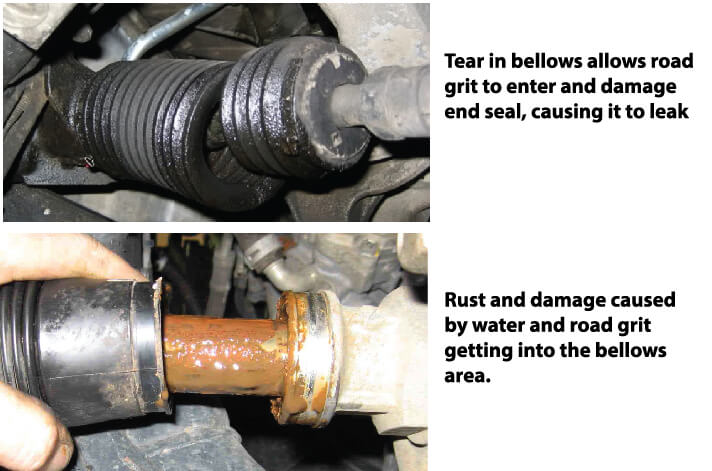
R&P gears can also develop fluid leaks in the spool valve area near the steering shaft input. These leaks are usually caused by dirty, contaminated or improper power steering fluid.
For more information on power steering fluid, read this post
For more information on tie rods, read this post
For more information on tie rod replacement cost, read this post
For more information on rack and pinion replacement cost, read this post
©, 2017 Rick Muscoplat
Posted on by Rick Muscoplat

